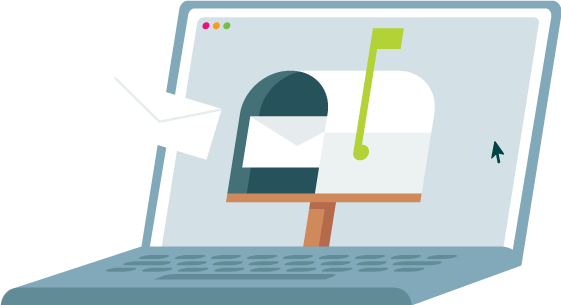Whether you’re at an early-stage startup or a Fortune 500 enterprise, managing cash flow is a vital component to your organization’s success. Cash flow management monitors cash inflows and outflows to help organizations accurately predict how much money will be available to use in the future. This helps them fund operations, pay vendors and suppliers on time and decide when to buy new assets.
Below we further explore the strategic importance of cash flow management and how your business can integrate best practices into your AP workflow.
In this blog, we’ll discuss what cash flow management is, the necessary metrics for managing it, and how a sophisticated Accounts Payable system can help.
Key Takeaways
- Cash flow management helps businesses maintain financial stability and avoid cash shortfalls
- Metrics like Days Payable Outstanding (DPO), payment mix, and free cash flow are essential for evaluating financial health.
- Understanding the most common warning signs for cash flow problems can help you remedy them before they negatively impact your cash flow.
- Automated accounts payable (AP) software improves cash flow management, reduces manual error, and supports smarter cash planning.
What is cash flow management?
Cash flow management is the process of planning, tracking, and controlling the movement of cash in and out of a business. It involves forecasting future cash needs and ensuring that there are sufficient funds available to meet these needs, as well as managing any excess cash in a way that maximizes its value. Cash flow management is an important aspect of financial planning and can help a business to stay financially stable and avoid financial challenges, such as bankruptcy or default on loans. Some common strategies include forecasting cash flow, conducting a cash flow analysis, reducing expenses, increasing revenue, and optimizing the timing of payments and receipts.
How cash flow management makes businesses more strategic
Cash flow management is crucial to a company’s financial stability. As we all know, “Cash is King”, offering a valuable safety net against financial crisis – but only when properly managed and analyzed. According to a U.S. Bank study, 82% of small businesses fail due to poor cash flow management or a misunderstanding of how it contributes to business continuity.
Cash flow management tracks and coordinates a company’s past, present and future expenses. It ensures that an organization is paying its invoices on time, adequately compensating staff with room for salary growth, and managing funds for future investments. A concrete understanding of the way cash flow affects business not only minimizes the risk of closure, but can ensure continued success and increased revenue rates. But all of this is only possible when a company has full transparency into their finances.
How do you manage cash flow?
Effectively managing cash flow within your business requires maintaining a balance between incoming and outgoing cash flows at all times. Here are some key best practices to help you manage cash flow successfully.
Monitor and track cash flow
Continuously monitoring and tracking the cash flow within your business through analytics and data, as well as bank and financial statements will help identify trends within your existing cash flow lifecycle, as well as help you identify opportunities where your process could be improved.
Cash flow forecasting
Cash flow forecasting is the process of projecting future cash inflows and outflows of a business. Businesses use this data to anticipate short-term and long-term business needs and make informed financial decisions.
Effectively manage accounts payable
Optimizing the accounts payable process and effectively managing AP is a key component to managing cash flow. A streamlined accounts payable process helps businesses reduce late-payments, promote strong supplier relationships, take advantage of early-pay discounts, which ultimately leads to improved cash flow. Ensuring teams also have the ability to accurately forecast accounts payable expenses is key in helping businesses better manage their cash flow.
Take advantage of early payment discounts
Early payment discounts are offered by vendors in exchange for paying a supplier’s invoice before the due date. Paying invoices early not only results in a discount, but it also strengthens the supplier relationship and gives businesses better transparency and understanding of their existing cash flow since there isn’t a false perception of the amount of money a business has at any given time.
How AP analytics helps improve cash flow management
A powerful tool, AP analytics increases transparency by extracting and visualizing detailed data from AP records. This visibility provides businesses with insights on where they can improve their AP processes, drive capital gains, and enhance management.
This is key because accounts payable is an important component in determining whether or not a company’s cash flow is healthy. By investing in an analytics tool, businesses can more easily gain insights into the following:
- Days payable outstanding (DPO)
- Number of duplicate payments
- Fraud risks
- Payment mix
- Rebates earned via electronic payment methods
- Ways to optimize the AP process
Below we will explore specific metrics needed to effectively manage your cash flow.
Necessary metrics for managing cash and assets
In order to properly manage cash on-hand, businesses must first have: an accurate understanding of money owed to their vendors, the timeline to pay those vendors, an exhaustive list of operating costs, and the cash that will be received. This information is the first step to unlocking a complete view of a company’s financial operations, and ultimately optimizing its spending strategy.
Below are some formulas and metrics needed to assess the health of your company’s finances.
Cash flow formulas
In order to quickly gather the data needed for these metrics, your AP team will need to have a good understanding of what has been spent and what soon will be hitting the books.
Free cash flow formula:
Free cash flow evaluates what cash is available for your company to use. This metric helps businesses make accurate decisions about purchasing assets or growing their team. The formula is as follows:
Cash flow = Net income + Depreciation/ Amortization – Change in Working Capital – Capital Expended
However, in order to ensure total accuracy, it’s important to understand which liabilities are still outstanding and when they will be paid.
Operating cash flow formula:
Operating cash flow is similar to the free cash flow formula in that it showcases how much cash a business has available. However, the free cash flow formula also accounts for things outside of normal business activities, such as the purchase or sale of a large asset. The following formula is more important when securing loans from a bank or assessing the traditional flow of cash into your business:
Cash flow = Operating income + Depreciation – Taxes + Changes in Working Capital
Days Payable Outstanding (DPO)
DPO is the number of days it takes to pay an existing supplier invoice. The formula is as follows:
Accounts Payable x Number of Days ÷ Cost of Goods Sold (COGS) = DPO
Increasing DPO can improve cash flow for businesses looking to make purchases or acquire assets. For example, Macy’s took 164 days to settle payments in 2021, increasing their DPO by about 30 days from 2020. Mondelez International also reported an increase in cash flow due to increasing its DPO.
However, a higher DPO may result in negative press, as it can sometimes signal a lack of cash available to pay vendors. As global supply chains make vendor relationships more important, organizations may want to avoid high DPO for their most valuable suppliers. This is because drawn out payments, a direct result of high DPO, can negatively impact supplier relationships. All in all, companies looking to responsibly manage their cash flow must strike a delicate balance between the needs for strong vendor relationships and the need for cash.
Discounts captured
Taking advantage of early payment discounts from vendors is an easy way to save company money without increasing your DPO. Below is the formula associated with discounts captured:
Number of Discounts Captured ÷ Number of Discounts Offered = Discounts Captured as a Percentage of Discounts Offered
The payment mix
Switching to electronic payments is another practice that companies can use to save money. This tip is especially relevant for firms that process large numbers of monthly invoice payments.
With 33% of companies still making over half of their payments via checks, odds are that your organization can take advantage of re-evaluating and optimizing its payment mix. Virtual cards in particular have the added benefit of offering cash-back rebates. Forge Biologics enlisted MineralTree to help them automate their AP workflow. They now make 90+% of their payments electronically, and are on track to make $80,000 this year from rebates.
5 steps to manage cash flow effectively
Now that we’ve examined the importance of cash flow management, let’s explore five best practices to effectively manage cash flow.
- Take advantage of early-pay discounts
- Negotiate better supplier terms
- Maximize visibility to reduce unnecessary costs
- Conduct regular internal financial audits
- Leverage AP automation services
1. Take advantage of early-pay discounts
Early-pay discounts are concessions that buyers receive in exchange for paying a supplier’s invoice early. These discounts serve as an incentive for businesses to act immediately on outstanding invoices; but really they are a win-win for both parties.
Early payment discounts improve cash flow processes for suppliers by incentivizing faster customer payments, thereby reducing day’s sales outstanding (DSO). For buyers, early payment discounts lower costs of purchased goods and provide more flexible spending limits. Buyers who take advantage of early payments also get an added bonus of strengthening their vendor relationships. Capitalizing on early payment discounts can add up to 2% of spending back into your accounts per year.
2. Negotiate better supplier terms
Negotiating or renegotiating supplier terms is one of the best ways to decrease expenses while increasing profit. If your company can increase DPO for less strategic suppliers, your team may be able to increase the amount of cash the business has on hand. When negotiating with suppliers, focus on scoring early payment discounts, especially with strategic partnerships that help your business run.
3. Maximize visibility to reduce unnecessary costs
In order to improve revenue, you will need to be cognizant of the funds you do and do not have on hand. Real-time visibility into cash flow management enables finance teams to see when expenses are outgrowing sales, identify depleting funds, and forecast oncoming financial strains. The best way to cut costs is to keep a close eye on your spending, and identify where and when you can cut back.
One way to do this is by automating your AP function; this can easily cut costs on items such as paper checks, manual tasks, and internal resources. It can also limit late payment fees by streamlining your AP process. If you choose to automate your AP function, be sure to look for a partner like MineralTree that has managed services offerings. This will allow your team to focus on more strategic finance projects while a trusted partner enrolls your vendors and optimizes your payment mix based on your specific business goals.
4. Conduct regular internal financial audits
Financial audits provide valuable information into a company’s finances through analysis of accounting records, cash holdings, and other sensitive financial data. They also ensure that a company’s records accurately depict their current financial position.
The goal of audits is to minimize the risk of fraud or mismanagement within the accounting department, and to identify processes or controls that should be improved.
AP automation significantly eases the stress of conducting financial audits. Without the need for human intervention, these automated systems can detect fraud and make it easy to find the documentation needed to validate purchases, confirm approvals have been made appropriately, and search for duplicate payments. This allows AP staff to focus on other strategic tasks.
5. Leverage AP automation solutions
While it might seem intimidating to automate your manual accounts payable department, not doing so may be the concrete ceiling that prevents your company from achieving your financial goals.
AP automation solutions provide organizations the accuracy and visibility that cloud most manual systems. Their real-time data dashboards grant businesses instant visibility into payment history and status updates for all outstanding invoices. This view not only centralizes all paper documents into a single system of record for electronic safekeeping, but also eliminates common information gaps that can lead to mismanagement of cash and poor cash flow health. Additionally, end-to-end AP automation allows your team to scale its AP function without increasing overhead expenses. 64% of teams that have implemented AP automation are processing more invoices with the same size team.
AP automation also allows businesses to process and pay invoices much faster, avoid late fees, and strengthen relationships with their suppliers. Not to mention, the simplicity of AP automation frees up time and money that was previously spent on manual work. This allows employees to further analyze cash flow trends and investigate ways to optimize company spending, inevitably saving you money in the long run. When paired with AR automation—which accelerates incoming payments—businesses gain a more balanced view of cash flow, helping them better align money coming in with money going out.
Warning signs your business has a cash flow problem (and how to fix them)
Effective cash flow management is essential to running a sustainable and scalable business, but many companies miss or even ignore cash flow problems until it’s too late. Here are five key warning signs that your business may be experiencing a cash flow problem, and more importantly, how you can fix them.
5 warning signs your business has a cash flow problem:
- Delayed payments
- High overhead costs
- Poor revenue forecasting
- Decreasing sales or profits
- Business is growing too quickly
1. Delayed payments
Delays in outgoing payments can be just as harmful as delays in incoming revenue. When businesses struggle to pay vendors on time due to manual bottlenecks or lack of visibility, they risk losing early payment discounts, facing late fees, and weakening supplier relationships. These inefficiencies may lead to cash flow challenges, especially for companies that operate on tight margins or complex vendor networks.
How MineralTree can help: To stay ahead of this issue, ensure that your business is up to date with billing best practices. Leveraging AP automation solutions can also help cut down on delayed payments by eliminating manual bottlenecks and improving visibility over the lifecycle of an invoice. AP systems can make this process substantially more efficient by routing invoices to the right place instantly, setting up reminders, and flagging any potential issues early on.
2. High overhead costs
An extremely common issue is when your revenue stays flat (or worse, declines), but your most common operational expenses like rent, salaries, and costs of materials and/or software continue to rise. While the reasons may vary, there are multiple avenues you could explore to fix this.
Auditing expenses is an important first step so you understand where your money is going, giving you the opportunity to make changes to what your business is paying for.
Renegotiating contracts may be a necessary step if you believe you are overpaying on rent, services, or software.
Finally, looking over payroll costs and seeing where you may be able to outsource or hire freelancers for non-core functions may free up cash you can use in the short term.
How MineralTree can help: MineralTree automates invoice capture, routing, and approval, reducing reliance on manual data entry and paperwork flows. Time saved means significantly lower labor costs, reduced human error that requires manual fixing, and eliminated expenses involved in printing, mailing, and storage which helps to further reduce overhead costs.
3. Poor revenue forecasting
Bad financial forecasting can lead you to overspend based on revenue that’s never going to arrive. If your business is not regularly updating its data for forecasting, you’re flying blind.
By using historical and seasonal data to set realistic expectations for your business, you can help align expectations with your sales and finance teams.
Segmenting your revenue by product or customer type can also help pinpoint weak spots in cash flow and improve forecasting accuracy.
How MineralTree can help: MineralTree provides visual dashboards and real-time analytics that can track invoice status, recurring payment timings, and cash outflows to easily make more accurate cash flow forecasts.
4. Decreasing sales or profits
Falling revenues or thinning margins can put immediate pressure on your cash flow, especially if it was unexpected. These issues can arise for any number of reasons including too many discounts, rising costs, or even underpricing your goods or services.
Understanding the root of why your profits are decreasing is vital to fixing it. It may also necessitate reevaluating your pricing strategy to ensure you’re charging enough to cover costs and staying competitive in the market. Even small tweaks to your pricing structure or business model can have resounding impacts.
Depending on the severity of your profit loss, crafting an emergency pricing strategy to give your business a buffer may be a smart strategy.
How MineralTree can help: By automating payment schedules, MineralTree can help capture available discounts, avoid late payments, and optimize payment timings. MineralTree also supports virtual card payments that offer cash back, which can help when margins are looking thin.
5. Business is growing too quickly
Rapid growth can obviously be great, but not if you don’t have the cash on hand to support it. Overestimating your businesses growth can lead you to hire more people and expand operations before money actually comes in, putting a massive strain on your business.
The solution here is to scale in phases and ensure these steps are aligned with forecast expenses tied to this growth. Try to secure funding early, whether it’s through investors or a line of credit so you have a natural buffer in case operating costs exceed inward cash flow.
Consider tightening payment windows for customers, even in the short term, to ensure you’re getting the cash you need to continue scaling at a safe rate.
How MineralTree can help: MineralTree scales with your business to handle high AP volume without increasing headcount. Its automated approval workflows, ERP integrations, and supplier portal ensure vendors are paid accurately and on-time, maintaining trust as the business grows and eliminating any confusion over invoices.
Why financial professionals prioritize AP software
Considering the immense complexity of cash flow management, it’s more important than ever to have an AP software that can support your business.
In a survey of over 1,000 financial professionals, AP automation was named the number one priority for businesses for the fourth year in a row, followed by AR (accounts receivable), expense management, forecasting, then payroll and benefits.
Additionally, four in five professionals cite that their AP processes require more automation — yet only one in five of their businesses have completely automated their AP activities. This means there is still significant time and opportunity to be gained.
Out of the many benefits of AP software, the top three reasons professionals cite are increased efficiency, faster payments, and the ability to process more invoices/payments with the same sized team.
Being able to leverage automation in your business means lower costs, fewer mistakes, and higher efficiency for your team.
Case Study: House of Cheatham Leverages AP Automation to Be More Strategic
House of Cheatham is one of the oldest health care beauty manufacturers in the United States. They strive for excellence throughout their business, but were encountering challenges in their accounts payable workflow. Their traditional approach was reactive – paying invoices as soon as they were processed. By implementing MineralTree’s AP automation solution, they were able to take a more strategic AP approach, optimizing their payment schedule to increase DPO and improve cash flow while still making sure to prioritize strategic vendors.
Simplify cash flow management with AP software
Cash flow fluctuations can negatively impact businesses without proper management. MineralTree’s AP automation system provides the necessary insights to secure financial growth and proactively manage cash flow within your accounts payable department. Having an AP software makes teams more efficient and helps your business avoid common cash flow pitfalls, or even sophisticated accounts payable fraud schemes.
Explore the benefits of MineralTree and how our systems have helped several businesses achieve their financial goals.
Frequently Asked Questions
What’s the difference between negative cash flow and positive cash flow?
Positive cash flow is the increase in a company’s net balance over a given period of time that is greater than zero. In other words, the total amount of cash inflows is higher than the amount of outflows, increasing the amount of available capital. This positive influx allows businesses to reinvest into their company, pay expenses, cover future financial challenges, and make expansion plans.
Negative cash flow is the opposite of a positive cash flow. It signifies a decrease in overall net worth, when more money leaves the organization than is coming in. For example, if a company has $100,000 in revenue and $150,000 in expenses for the month, they will end up with a negative cash flow. This is common for many new businesses, but is unsustainable in the long-term. Funds will inevitably run out if your expenses regularly exceed your profits.
What are the types of cash flow?
The main three classes of cash flow are operating, investing, and financing.
- Operating – This is the cash from core business operations with positive cash flow being the selling of your goods and/or services and negative being covering operational expenses. These are your day-to-day expenses.
- Investing – This is the cash from the purchasing or selling of long term assets like property or equipment.
Financing – This is the cash from company financing activities such as issuing/repaying debts or issuing/repurchasing equities.
What are the differences between debt financing and equity financing?
Debt financing is often used to buy new physical assets, where the asset itself can be used as collateral. In equity financing, the loan is secured via shares of the company itself. Both methods can be used to help businesses increase cash flow.
How do businesses control and manage cash flow?
There are various ways that businesses can control and manage their cash flow. Some common approaches include cash flow forecasting, monitoring and tracking cash flow, taking advantage of early pay discounts, and optimizing your AP process with automation.
How do you improve cash flow?
Improving cash flow for your business can be done by the following:
- Making timely vendor payments
- Effectively managing inventory
- Negotiate payment terms with suppliers
- Streamline AP processes and workflow
- Cash flow forecasting
- Control expenses
What does it mean to optimize cash flow?
To optimize cash flow means to analyze payment trends within your business and from there, implement strategies aimed at maximizing the amount of cash inflow, while minimizing cash outflow.
How do you meet a temporary cash shortage?
If you are projected to have a temporary cash shortage, here are a few strategies to consider:
- Obtain a line of credit from a bank
- Acquire short term loans
- Tighten accounts receivable windows for customers to get cash quicker
- Negotiate better payment terms with vendors
- Defer non-essential spending and cutting extraneous spending
Why is cash flow important to every enterprise?
Cash flow management is crucial for every enterprise as it supports day-to-day business operations, financial stability, growth, and enables strategic decision-making. Businesses that maintain a positive cash flow take advantage of new business ventures, thrive in a competitive environment, and successfully navigate financial challenges.




